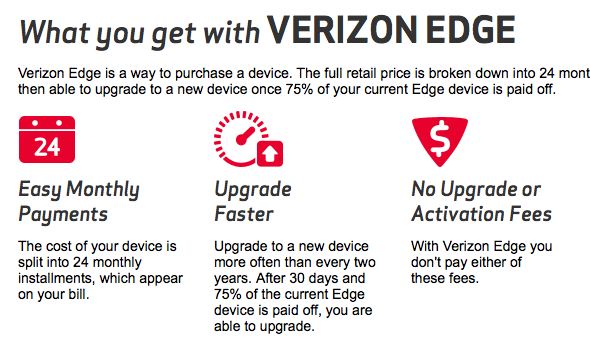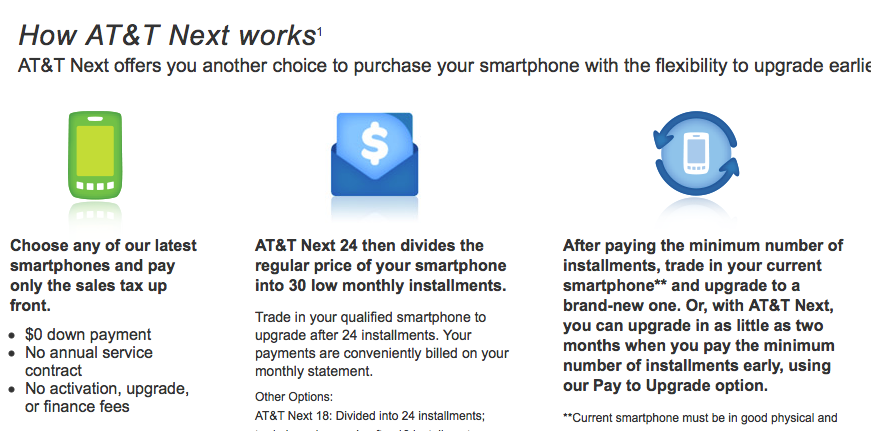A little over two years ago, the Uncarrier (T-Mobile) shook up the industry by offering Simple Choice plans. No discount subsidies for equipment purchases and no contracts. Just pay upfront for the device you want, and enjoy lower monthly plan access fees.
Prior to this, the carriers offered substantial discounts to consumers to acquire a phone or tablet device, such as just $199 to snag the latest iPhone or Android device. The devices however cost the carriers substantially more.
To make up the difference, consumers were locked into 2-year contracts with the plans essentially having a loan payment built into the monthly cost. Regardless if you took the subsidized price, had fulfilled the contract or even technically paid off the device purchase - you paid the same rate. Even if you paid full price or brought your device to avoid contract lock in, you were still making a monthly loan payment.
For some consumers, this method can still be a great deal. Especially by navigating early upgrades to the latest and greatest equipment. But for consumers who don't upgrade that often, they were essentially continuing to make loan payments indefinitely on a principle that had already been paid off.
AT&T and Verizon both reacted to the Uncarrier move by offering Equipment Installment Plans (EIP). AT&T calls their Next, and Verizon calls theirs Edge.
With these plans, the carriers separate out the cost of repaying for the device from the monthly plan. Consumers can still get their devices with little cost upfront, and when they pay them off, the payment goes away. When using an EIP or paying for the device upfront, the carriers reduce the monthly per line cost by up to $25/month per phone.
If the customer wants to switch carriers, they just pay off the phone and don't have to worry about a contract on their service. Some carriers even tempt in new customers to switch by offering to pay off any repayments due to another carrier.
Today, 65% of new postpaid plans with AT&T use their next plan and Verizon is seeing a 50% rate of Edge sign-ups. Clearly, consumers like the simplicity and transparency of these models.
For RVers, these plans can make a lot of sense to keep flexibility for those who might like to switch carriers as their own travel styles change.
In the coming days, both carriers will be making some changes that will further cement EIPs as the default option:
AT&T Next Changes
Starting on June 1, at some national and local dealer locations, two-year contracts will no longer be offered to consumers. Buying a device in store will default to the Next EIP program. Consumers preferring the older 2-year contract with subsidized pricing can still get them by ordering online, visiting an associated retailer (not a direct corporate store) or specifically asking for it at a national corporate store. However, those orders will come from a fulfillment center, meaning the customer will not be able to walk out of the store with their new phone, it will be shipped to them.
To upgrade to a new device under the Next program, AT&T customers will still have to pay off all of their Next payments, which can be done at anytime, and trade their device in.
More Information: FierceWireless Article
Verizon Changes
Previously with Verizon's Edge, if a consumer wanted to trade in their phone for an upgrade they had to pay off 75% of their phone's cost and trade in the device. Effective on May 31, Verizon is changing this so that consumers must pay off 100% of the device to upgrade. However, they no longer have to trade in the device - they can keep them, re-sell them, re-use them or get a credit for donating them.
The 2-year contract also remains accessible to Verizon customers.
More Information: FierceWireless Article









 Mobile Internet Resource Center (dba Two Steps Beyond LLC) is founded by Chris & Cherie of
Mobile Internet Resource Center (dba Two Steps Beyond LLC) is founded by Chris & Cherie of